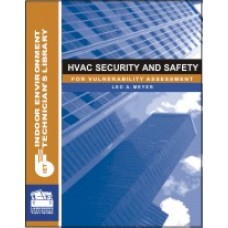The Chiller Plant as Living Lab: What High-Tech HVAC Systems Can Teach Students

Optimum Energy worked with Georgia Tech to optimize the campus’s large, mixed-equipment systems. Gerald Benjamin, Georgia Tech stationary engineer, indicates a chiller’s BAS onboard controller. The Optimum Energy solution reads the chiller status and directs operations through the BAS, helping it make real-time adjustments to chiller equipment.
Facilities leaders faced with curtailing rising costs and meeting sustainability targets while keeping building occupants comfortable and maintaining climate control for labs and other sensitive spaces need increasingly sophisticated systems to achieve their goals. These systems justify themselves based on hard-dollar returns on investment. But looking at them only through that lens misses a significant opportunity to contribute to the institution’s educational mission.
Campus physical plants that have become internets of things — requiring cloud-based management, machine learning, and visualization tools — could serve as more than unseen controllers of the classroom environment. They could be the classroom. Mechanical engineering students could explore the plant with managers and engineers to see how a cutting-edge HVAC system works, for example, and visualization tools could bring the plant into the classroom. The trove of data these systems produce could also give data science students meaningful analytics projects.
THE OPTIMIZED HVAC LAB
What will students see when they look inside an advanced campus HVAC system? What could they learn about?
At Georgia Tech, which hosts class visits to its chiller plants, students can get a look at two large, optimized chiller plants with mixed-equipment systems—a common situation. One plant has seven chillers, seven condenser water pumps, seven cooling towers, and one free-cooling heat exchanger, and the other has seven chillers, seven condenser water pumps, and three cooling towers.
Technology includes a state-of-the-art chiller that can handle wide variations in water flow, a water- and energy-saving pump configuration, and an advanced optimization software implementation tailored to meet rigorous network security requirements while providing the continuous support and monitoring needed to maintain energy and cost savings. Georgia Tech and Optimum Energy worked together to develop a way for Optimum Energy’s cloud-based OptiCx solution to function without direct network access. Every five minutes, data passes from the BAS to data loggers, which OptiCx reads through a VPN-protected database. Now the Georgia Tech team can see and evaluate system performance in real time.
The University of Texas at Austin demonstrates a multiple-building, data-driven HVAC implementation. The campus optimized four chilled water plants (totaling 45,000 tons) on a common loop with a 4 million gallon thermal energy storage (TES) tank in a series of projects that followed the three laws of optimization:
- What cannot be measured cannot be optimized;
- Optimize systems, not just individual components; and
- Optimization must be automatic, dynamic, and continuous for maximum efficiency.
The project included control of chiller staging for all four plants, variable differential pressure control and flow control, and TES charge and discharge. The university is now saving 21,000,000 kWh, 200,000 MMBtu of steam usage, and 4 million gallons of water annually.
Learning opportunities depend on the plant setup, but the chance to experience a plant before and after optimization, or to compare optimized and unoptimized plants, would be enormously valuable. The monitoring data and performance statistics an optimization platform produces provide plenty of ways to explore the factors in plant efficiency.
Even newer plants have teaching potential. We worked on a university bioscience research facility plant that was only five years old and had inflexible climate requirements. Post-optimization, the plant runs 27 to 37 percent more efficiently and is a living demonstration of maximizing efficiency. The university’s director of facilities and lab services converted it to an all-variable flow plant and then added an optimization and control layer. From the variable speed drives and sensors installed on chillers, pumps, valves, and tower fans, the software collects a tremendous amount of data about the plant equipment, including water flow, electrical power consumption, load conditions, and more. It compares the data to control algorithms, assesses plant conditions in real time, and then automatically changes pump and fan speeds using chilled water temperature, equipment staging, and other operational changes to maximize efficiency.
STUDENTS CRAVE HANDS-ON EXPERIENCE
Last year I taught an entrepreneurship class with two other clean-tech executives at the Institute for Sustainability and Engineering at Northwestern University, and it was clear that students crave hands-on experiences with the latest technology and need to understand real-world applications.
Most colleges and universities are not yet bringing students into their chiller plants and boiler rooms when they upgrade, but they’re missing a real opportunity. One of our engineers, a former campus facilities manager, brought in mechanical engineering students as interns and found the experience mutually beneficial. “They bring a lot of enthusiasm, and it helps them to put theory and practice together,” he says, adding, “It’s the greatest way to hire new staff. The benefit for the university is obvious.”
Colleges may even benefit from new ideas from students—our engineer also sponsored an annual senior project at the engineering school, and ended up implementing a couple of ideas the students came up with. We’ve seen the benefits of working with students ourselves. At Optimum Energy headquarters in Seattle, we worked with University of Washington students on a machine learning project, and found that both sides benefited. As one of the students told a local radio reporter about the program, “Oftentimes when you take a class everything’s super neat, everything works out super nicely. But that’s not the real stuff. In the real stuff, there’s actual work to be done,” like discovering a faulty sensor that messes up your datasets.
Based on our experiences, we will gladly have engineers work with students on-site at our installations. We encourage facilities directors at colleges and universities to invite students to learn in the chiller plant and boiler room: they’ll be contributing to their institution’s educational mission and gain a new perspective on their plant.
Schools that view their HVAC plants as part of the educational experience can engage their students with the next generation of building technology in a way that gives them the insights needed to develop ever simpler, more powerful, and more cost-effective building systems. They’ll know what a high-performing plants looks like, because they’ll have seen one in action. That’s an ROI that will benefit the entire world.
Publication date: 11/19/2018
Want more HVAC industry news and information? Join The NEWS on Facebook, Twitter, and LinkedIn today!










